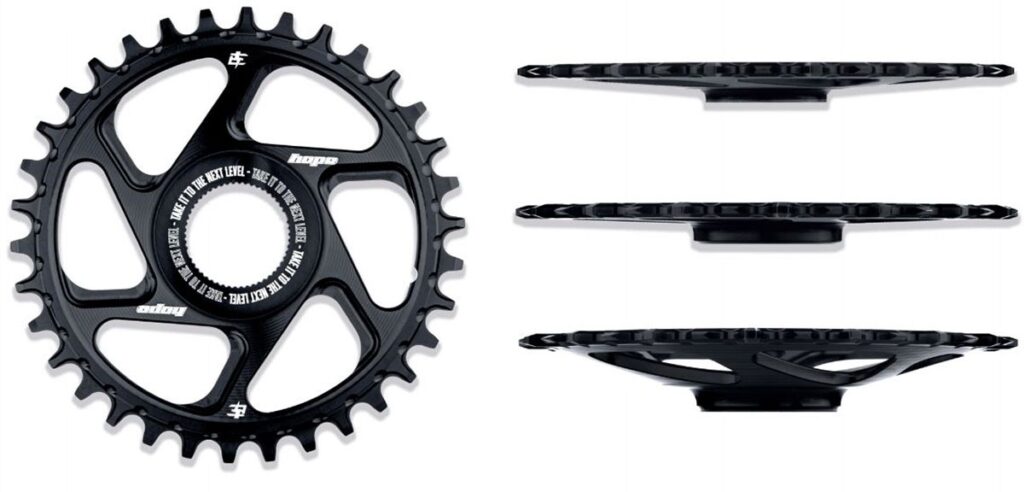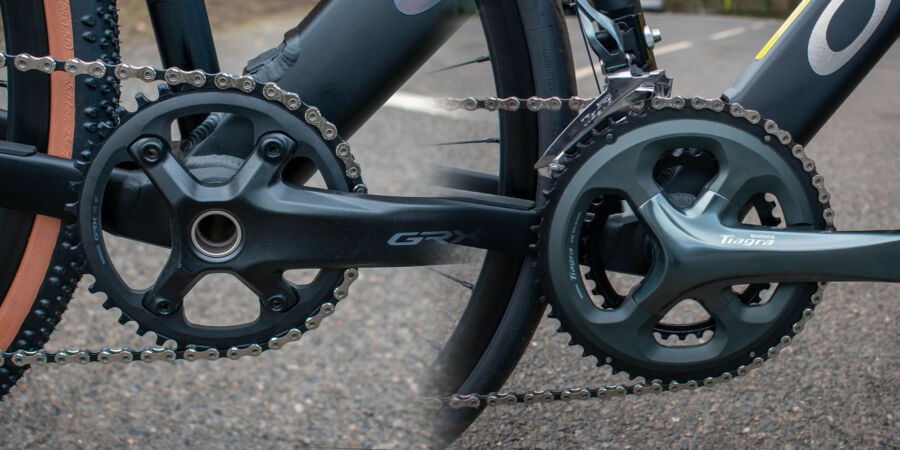If you’re an e-bike rider looking to upgrade your drivetrain or improve your ride efficiency, choosing the best e-bike chainrings is crucial. The right chainring affects your speed, power, and overall cycling experience. Whether you’re climbing steep hills or cruising on flat roads, selecting the correct e-bike chainring size and type ensures better performance.
In this guide, we’ll walk you through everything you need to know, from understanding chainring sizes and types to choosing the best material for your needs. We will also cover essential maintenance tips and expert recommendations for different riding styles. Let’s dive in!
Table of Contents
Table of Contents
What is a Chainring, and Why Does It Matter for E-Bikes?
A chainring is the front gear on your e-bike that connects to the crankset and drives the chain. It plays a key role in how efficiently your bike transfers power from the pedals to the wheels.

For e-bikes, the chainring size impacts speed and torque:
- Larger chainrings (more teeth) provide higher top speeds but require more effort to pedal.
- Smaller chainrings (fewer teeth) make climbing hills easier and increase torque but reduce overall speed.
Additionally, chainrings contribute to battery efficiency. A well-chosen chainring ensures that your motor operates within an optimal range, reducing unnecessary strain on the battery and extending its lifespan.
Choosing the right chainring ensures a smoother ride, better battery efficiency, and improved drivetrain longevity.
Understanding E-Bike Chainrings Sizes
How Chainring Size Affects Performance
Chainrings are measured by their teeth count—the number of teeth around the edge. Common e-bike chainring sizes range from 32T to 52T, with each size offering different advantages:
- 32T–38T: Best for climbing hills and off-road riding, providing more torque.
- 39T–44T: A balanced choice for city commuting and general riding.
- 45T–52T: Ideal for high-speed riding on flat terrain but requires more pedaling effort.
Gear Ratio Optimization
Your e-bike’s gear ratio is determined by the combination of the chainring and rear cassette (gears at the back). A well-matched gear ratio ensures efficient power transfer and a comfortable pedaling experience. Riders who tackle steep inclines should opt for a smaller chainring to avoid excessive motor strain.
Additionally, cadence plays a crucial role in optimizing efficiency. Matching the correct chainring to your natural pedaling rhythm helps maintain an ideal power output and prevents premature drivetrain wear.
Types of E-Bike Chainrings
1. Single vs. Double Chainrings
- Single chainring (1x drivetrain): Simpler, lighter, and easier to maintain. Best for most e-bikes.
- Double chainring (2x drivetrain): Offers more gear range but adds complexity and weight.

Single chainring setups are ideal for e-bikes with strong pedal-assist functionality, whereas double chainring systems are more useful for riders who need a greater variety of gears for different terrain types.
2. Narrow-Wide Chainrings
These chainrings alternate between narrow and wide teeth to provide better chain retention. They’re popular in mountain biking and off-road e-bikes to prevent chain drops. If you frequently ride on rough terrain, a narrow-wide chainring may be a great choice to improve stability.
3. Lightweight Chainrings for E-Bikes
If you want to reduce weight and improve efficiency, choosing a lightweight aluminum or carbon chainring can enhance your ride’s performance. Carbon chainrings, though expensive, offer the best strength-to-weight ratio.
How to Choose the Best E-Bike Chainrings
1. E-Bike Drivetrain Compatibility
Not all chainrings fit every e-bike. Check:
- Bolt Circle Diameter (BCD): The measurement that determines whether the chainring fits your crankset.
- Crankset Type: Ensure the chainring is compatible with your e-bike’s crank arms.
2. Chainring Material Options
- Aluminum: Lightweight and durable; best for casual riders.
- Steel: Heavier but more durable; great for high-power e-bikes.
- Carbon: Ultra-lightweight and high-performance but more expensive.
3. Pedal Assist System Considerations
Your e-bike’s pedal assist system (PAS) affects how much power the motor provides. If you ride mostly on assist levels, a larger chainring may be better for efficiency. If you prefer manual pedaling, a smaller chainring can make it easier.
4. Upgrading Your Chainring
If you feel your e-bike is too slow or too hard to pedal, changing the chainring is a simple and effective upgrade:
- Want more speed? Choose a larger chainring.
- Need better climbing power? Go for a smaller chainring.
Step-by-Step Best E-Bike Chainrings Buying Guide
- Assess Your Riding Style: Commuting, mountain biking, or long-distance touring?
- Check Compatibility: Ensure the chainring fits your e-bike’s crankset and drivetrain.
- Consider Weight vs. Durability: Aluminum for lightness, steel for longevity.
- Compare Teeth Count: Balance speed and torque according to your riding needs.
- Look for Special Features: Narrow-wide design for better chain retention.
- Budget Considerations: Determine how much you’re willing to spend for performance improvements.
Maintenance Tips for E-Bike Chainrings
- Clean Regularly: Remove dirt and debris to extend lifespan.
- Lubricate the Chain: Prevents wear on both the chain and chainring.
- Check for Wear and Tear: Replace the chainring if teeth become worn or damaged.
- Avoid Cross-Chaining: Shifting gears improperly can cause premature wear.
- Inspect Bolts and Mounts: Loose bolts can cause drivetrain issues.
- Store Your E-Bike Properly: Keeping your bike in a dry, cool space prevents rust and corrosion.
Conclusion
Choosing the Best E-Bike Chainrings depends on your riding style, terrain, and drivetrain compatibility. Whether you’re looking for more speed, better hill climbing, or a simple upgrade, understanding e-bike chainring sizes and types will help you make the best decision.
If you’re unsure, start with a chainring size that matches your current setup and experiment with upgrades to find the perfect balance. Your riding experience will improve drastically with the right choice!
Do you have experience upgrading your e-bike’s chainring? Share your thoughts and tips in the comments below!








